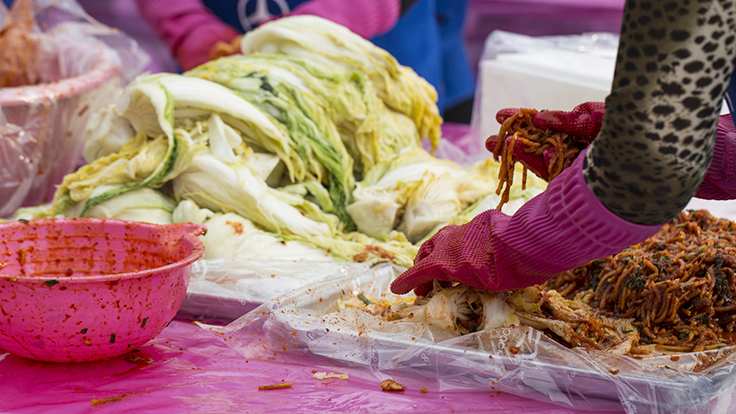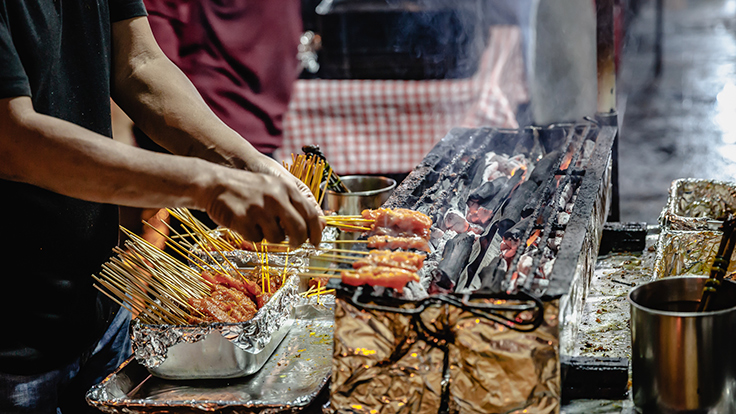Historic and natural sites around the globe have the UNESCO World Heritage designation, but how do you recognize cultural traditions? Enter UNESCO's Intangible Cultural Heritage list. This encompasses everything from tango in Argentina and Uruguay to Indonesian Wayang puppet theater. The list is updated annually and on it are a number of foods, drinks, and food customs.

Belgian Beer
Beer brewing in Belgium dates back to the ninth century, when it was made by monks in abbeys. In the 12th century, Hildegard of Bingen—a writer, composer, polymath, and Renaissance woman before the Renaissance existed—became the first to write about using hops in beer. Monks continued brewing beer in two distinct styles: Trappist—beers brewed only by Trappist monks—and Abbey—beers that were once brewed by monks but are now made by breweries. Belgium produces more than 1,000 types of beer ranging from pale blonde to dark brown, sweet to chocolatey, light to medium-full bodied, with a long finish.Couscous
Couscous—teeny, tiny steamed balls of crushed durum wheat semolina—is a staple food of Maghrebi cuisine. The way it's produced and eaten in Algeria, Mauritania, Morocco, and Tunisia joined UNESCO's intangible heritage list in 2020. Couscous can go savory or sweet (with almonds, cinnamon, sugar, rose or orange flower water, and sometimes raisins). It's usually served with vegetables cooked in a broth or stew that can be mild to spicy and sometimes with meat (usually chicken, lamb, or mutton). In Tunisia, couscous gets its heat and burnt orange color from harissa and is often served with seafood.
Kimchi
Kimjang, the process of making kimchi, is a fundamental part of traditional Korean cuisine. It's done in both South Korea and North Korea, so it's on UNESCO's list twice. Kimchi is salted and fermented vegetables—cabbage and radish are the most common. Seasonings vary based on region and household taste, but generally include gochugaru (chili flakes), garlic, ginger, and jeotgal (salted seafood). For those who have the space, kimjang is a communal activity shared with neighbors and family, with hundreds of jars sealed and stacked, ready to be eaten throughout the year.

Gastronomic Meal of the French
A leisurely, multi-course meal is an essential element of French culture. UNESCO says the meal should include pre-drinks (apéritif), "at least four courses"—starter, fish and/or meat with vegetables, cheese, dessert—and end with liqueurs (digestif). If this seems like a lot, fear not: at its core, the gastronomic meal of the French is about sharing and enjoying a meal with others.
Lavash
This flatbread eaten in the South Caucasus and Western Asia makes UNESCO's list twice: once for its starring role in Armenian cuisine, and once as part of flatbread making culture in Azerbaijan, Iran, Kazakhstan, Kyrgyzstan and Turkey. Lavash is usually unleavened; a dough of wheat flour and water is kneaded and formed into balls, which are then rolled into thin layers, stretched on an oblong cushion, and cooked on the walls of a clay oven (think tandoor) for 30-60 seconds. Among the many delicious Western Asian and South Caucasus flatbreads are Turkish yufka, made only with olive oil and wheat flour, and Kyrgyz katama, a flaky, crispy swirled flatbread filled with caramelized onions.
Neapolitan Pizza
It's not pizza itself that's intangible heritage but the people who prepare and bake the dough in a wood-fired oven—Neapolitan Pizzaiuolo. There's the Master Pizzaiuolo, the Pizzaiuolo, and the baker, a designation that depends on experience. What makes a pizza Neapolitan? The Associazione Verace Pizza Napoletana says the dough must be made with high protein 0 or 00 flour, kneaded by hand, and topped with either fior di latte (made from cow’s milk) or mozzarella di bufala (made from water buffalo milk), San Marzano tomatoes, basil, and extra-virgin olive oil. Into an 800℉ wood-burning oven for max. 90 seconds and you've got a pie with a chewy, puffy, slightly charred crust.

Nsima
This Malawian staple food is a porridge made with maize flour that's then thickened until it can be formed into solid wedges. Nsima is served with nearly everything—soups and stews, saucy meat or fish, and cooked vegetables like amaranth, pumpkin, or mustard leaves. To eat Nsima, take a bit from a larger piece, roll it into a ball, and make a small indentation to better scoop up soup or sauce. Nsima is in a family of porridges eaten widely across Sub-Saharan Africa, from ugali in the African Great Lakes region to sadza in Zimbabwe.
Singaporean Hawker Culture
UNESCO nails it calling Singapore's hawker centers "community dining rooms". These casual, bustling, open-air food halls have dozens, sometimes even hundreds, of stalls selling a huge variety of affordable eats. They're welcoming to everyone and draw visitors and residents from across Singapore. Think the best of a food tour, all under one roof, with satay, prata, chicken rice, laksa, nasi goreng, kaya toast...the list goes on and on. For a true hawker center, you'll have to go to Singapore—a wonderful trip for anyone who loves to eat—but you can still taste hawker-style dishes at restaurants in the US.

Washoku
Washoku, traditional Japanese cuisine, made UNESCO's list in 2013. It favors heavily using natural, local ingredients—rice, fish, vegetables, edible wild plants—with great respect paid to the seasons.
Hero image: Making couscous in Morocco. Photo © francisgonsa/iStock
This article is edited by Julia Lee for Michelin Guide Seoul





















